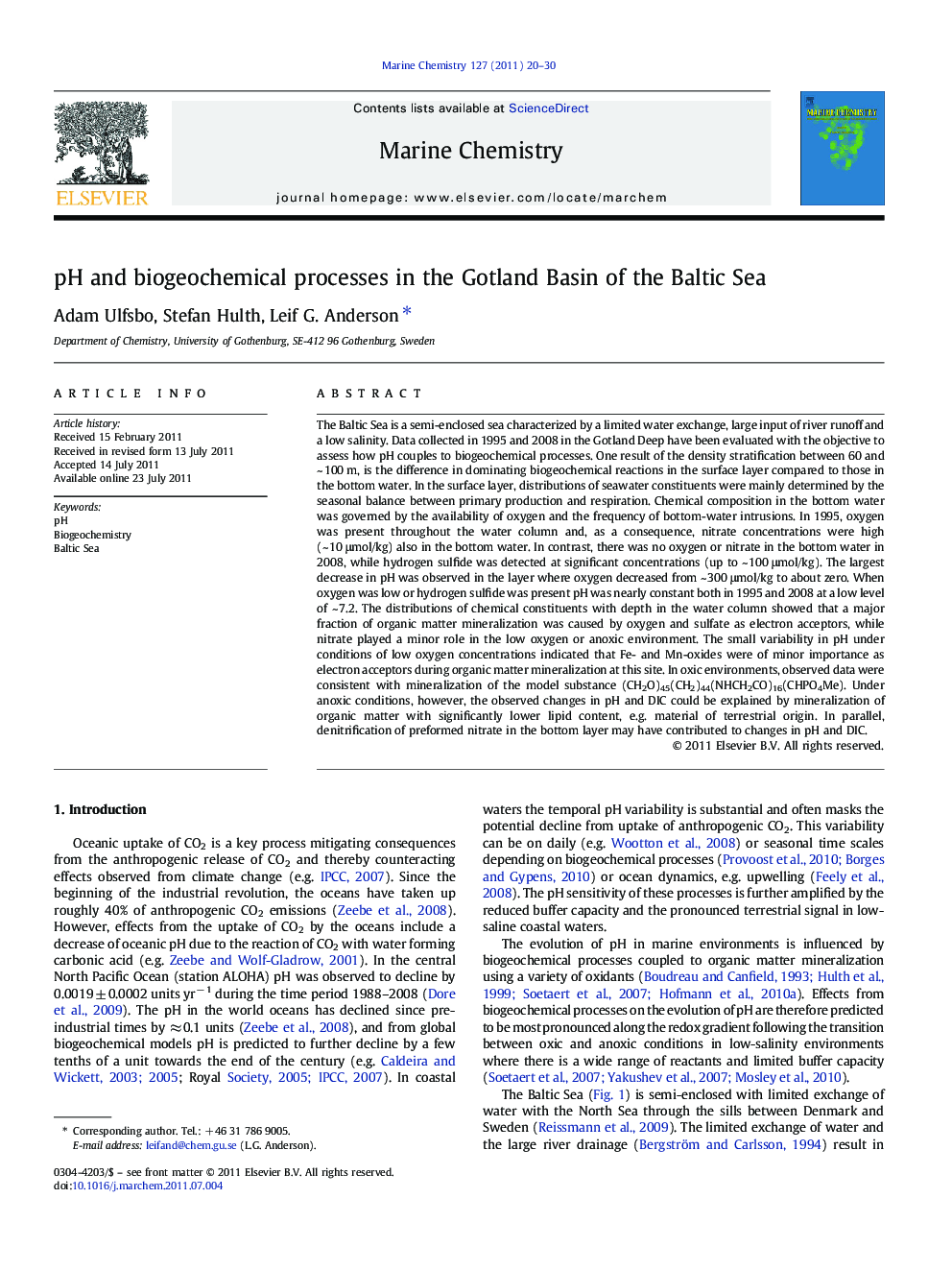| Article ID | Journal | Published Year | Pages | File Type |
|---|---|---|---|---|
| 1261477 | Marine Chemistry | 2011 | 11 Pages |
The Baltic Sea is a semi-enclosed sea characterized by a limited water exchange, large input of river runoff and a low salinity. Data collected in 1995 and 2008 in the Gotland Deep have been evaluated with the objective to assess how pH couples to biogeochemical processes. One result of the density stratification between 60 and ~ 100 m, is the difference in dominating biogeochemical reactions in the surface layer compared to those in the bottom water. In the surface layer, distributions of seawater constituents were mainly determined by the seasonal balance between primary production and respiration. Chemical composition in the bottom water was governed by the availability of oxygen and the frequency of bottom-water intrusions. In 1995, oxygen was present throughout the water column and, as a consequence, nitrate concentrations were high (~ 10 μmol/kg) also in the bottom water. In contrast, there was no oxygen or nitrate in the bottom water in 2008, while hydrogen sulfide was detected at significant concentrations (up to ~ 100 μmol/kg). The largest decrease in pH was observed in the layer where oxygen decreased from ~ 300 μmol/kg to about zero. When oxygen was low or hydrogen sulfide was present pH was nearly constant both in 1995 and 2008 at a low level of ~ 7.2. The distributions of chemical constituents with depth in the water column showed that a major fraction of organic matter mineralization was caused by oxygen and sulfate as electron acceptors, while nitrate played a minor role in the low oxygen or anoxic environment. The small variability in pH under conditions of low oxygen concentrations indicated that Fe- and Mn-oxides were of minor importance as electron acceptors during organic matter mineralization at this site. In oxic environments, observed data were consistent with mineralization of the model substance (CH2O)45(CH2)44(NHCH2CO)16(CHPO4Me). Under anoxic conditions, however, the observed changes in pH and DIC could be explained by mineralization of organic matter with significantly lower lipid content, e.g. material of terrestrial origin. In parallel, denitrification of preformed nitrate in the bottom layer may have contributed to changes in pH and DIC.
► Coupling between biogeochemical processes and pH distributions in the Gotland Deep. ► Major fraction of organic matter mineralization was caused by oxygen and sulfate respiration. ► The largest change in pH coincided with the gradient in oxygen concentration. ► Bottom water with low oxygen or anoxic conditions had low and constant pH of ~ 7.2. ► Fe- and Mn-oxides were of minor importance as electron acceptors during OM mineralization.
